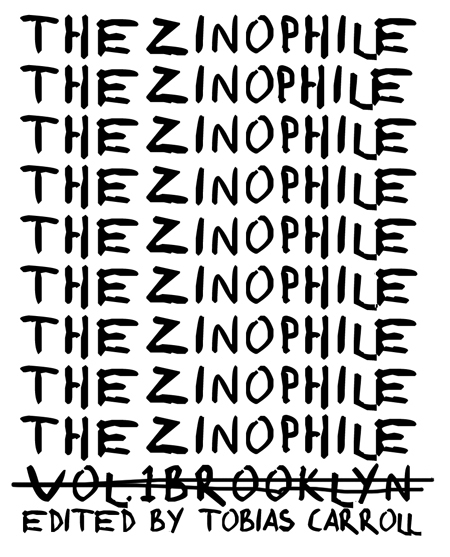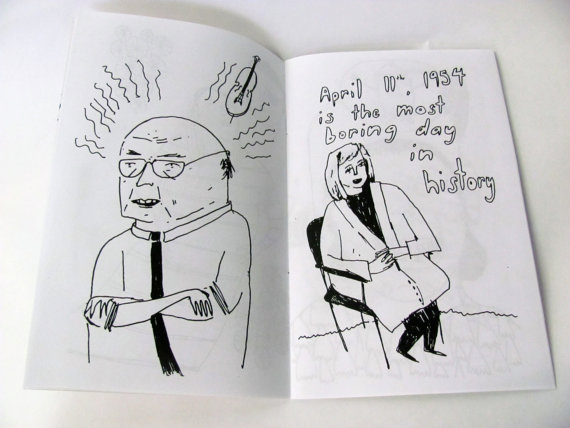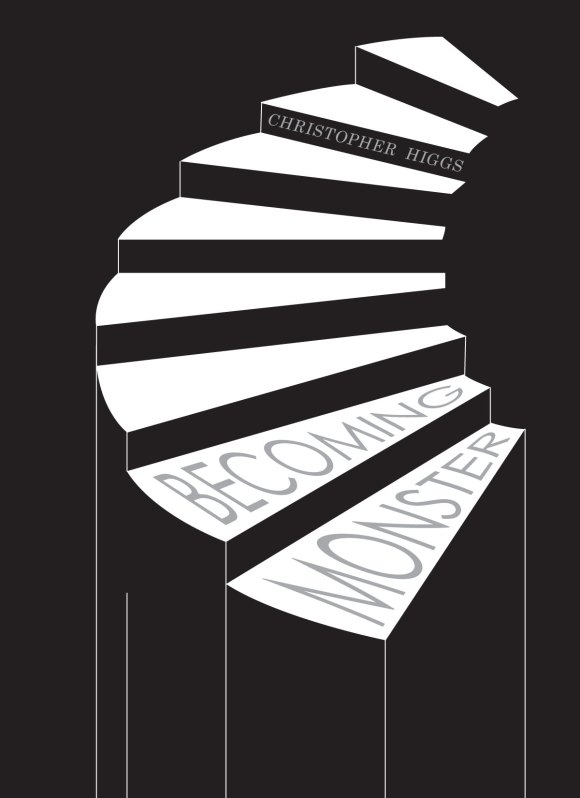
If this week is any indication, a brief autumn appears to have given way to an early onset of winter. Do I dare call it zine-reading weather? Is any kind of weather not well-suited to the reading of zines? (I mean, torrential downpours might pose some problems.) But right now, it’s time to put thoughts of zines past aside and turn towards the zines of today.
We’ll start with one on the artistic side. Elizabeth Graeber’s A Coloring Book of People is mightily charming. The body language is great — everyone looks slightly pissed off. Her characters tell bad jokes, glare, and look somewhat annoyed at the reader — and it’s all in stark black-and-white. I’d be tempted to take out assorted colored pencils and start filling in the outlines, but I’m reasonably sure that my interpolations would not improve Graeber’s linework.

From the irreverent to the much more considered. Christopher Higgs’s chapbook Becoming Monster is the latest from The Cupboard. It’s a meditation on monsters — Frankenstein’s creature, the werewolf, and serial killers (among others) — with a somewhat academic bent. Towards the end, it takes on some of the qualities of a manifesto, all the while borrowing imagery from everything from lynch mobs to folklore. Higgs’s touchstones on this meditation on the nature of humanity are often controversial: Jean Genet, GG Allin, and Harmony Korine. But there’s plenty to chew on and mull over in here, even if you end up feeling as though Higgs’s conclusions don’t quite mesh with his evidence.

On a recent trip to Desert Island to buy some comics, I picked up the seventeenth issue of their quarterly, Smoke Signal. “Funny,” I thought. “This looks like a Chris Ware piece for the cover” — which, of course, it was. Much like his Building Stories, it’s a kind of collage, a series of short strips about one character arranged without an overt story. The issue also contains a couple of dark, absurdist pieces from David Shrigley. For me, highlights included Tim Lane’s dense look at the stylistic effects of the Harley-Davidson WLA Liberator on culture and Brandon Marra’s barbarian warrior comic; the latter very much has the feel of pastiche, but there’s a great sense of shadow and pacing, and for a two-page strip, I have no qualms with an experiment working in a specific genre.
Follow Vol. 1 Brooklyn on Twitter, Facebook, Google +, our Tumblr, and sign up for our mailing list.
